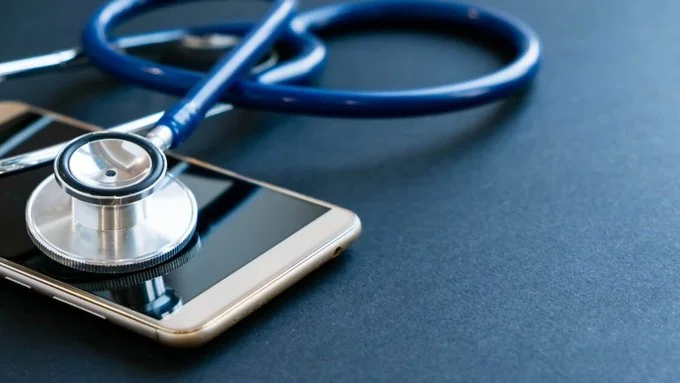Is your phone feeling sluggish lately? Apps taking forever to load? Scrolling through social media feels like a chore? This could be a sign that your phone’s cache is overflowing. Let’s dive into what cache is and how to clear it on both Android and iPhone devices to get your phone running smoothly again.
What is Cache and Why Does Your Phone Have It?
Your phone’s cache acts like a personal assistant, anticipating your needs and keeping things ready for instant access. Imagine you have a designated shelf in your kitchen specifically for quick grabs. This shelf might hold your favorite snacks, coffee pods for your morning brew, or even your go-to takeout menus. The goal is to have these items readily available to save you time and effort in your daily routine.
Similarly, your phone’s cache stores temporary data from apps and websites you use frequently. This data can include:
- Recently viewed images and videos: When you visit a website or open an app, the cache might store snippets of images or videos you’ve seen recently. This way, the next time you encounter that content, it loads much faster because your phone already has it on hand.
- Login details: The cache can store login information for websites or apps you use regularly. This saves you the hassle of typing in your username and password every single time.
- App data: Sometimes, apps might store temporary files or settings within the cache. This can help the app function more smoothly and efficiently when you use it again.
In essence, the cache is all about convenience and speed. By storing this temporary data, your phone can anticipate what you’ll need next and have it prepared, leading to faster loading times, smoother app performance, and a more efficient overall user experience.
How to Clear the Cache on Your Android Phone
Step 1: Accessing Settings
The first step to clearing your Android phone’s cache is to open the Settings app. It’s usually represented by a gear icon on your home screen. Once you’ve opened Settings, we’ll navigate to the storage section where cached data is managed.
Step 2: Finding Storage
Look for a section labeled Storage or Storage Management. The exact name may vary slightly depending on your phone’s model and manufacturer. If you can’t find it right away, try searching for “storage” in the settings bar at the top.
Step 3: Selecting Apps and Identifying Cache
Once you’ve located the Storage section, tap on it. You’ll see a breakdown of your phone’s storage space used by different categories, like apps, photos, and videos. Find and tap on Apps. Here, you’ll see a list of all installed applications on your phone.
Step 4: Clearing the Cache for Specific Apps (Optional)
If you suspect a particular app is causing performance issues, you can target its cache directly. Tap on an individual app to see its storage usage details. Locate and tap on the Cache option. A confirmation message might appear – select “OK” to clear the cache for that specific app. This can be helpful if you’re noticing slowness in a particular app you use frequently.
Step 5: Clearing All App Cache (Optional)
Some Android devices offer the option to clear the cache for all apps at once. This can be a quick way to free up a significant amount of storage space, especially if your cache has become overloaded. Look for a menu option labeled “Clear app cache” or similar. However, this feature might not be available on all devices. Check your phone’s settings for this option if you’d like to clear the cache for all apps at once.
How to Clear Cache on iPhone
Unlike Android, iPhones don’t offer a straightforward way to directly clear the cache of individual apps. It’s more like taking a slightly more roundabout route. Here’s how to tackle it:
Step 1: Accessing Settings – Your iPhone’s Command Center
The first step is to open the Settings app, which acts as your iPhone’s central command center. You’ll find it easily as a gear icon on your home screen. Once you launch Settings, we’ll navigate to a specific section to manage your iPhone’s storage, which can get cluttered with cached data.
Step 2: Locating General Settings
Scroll down through the list of options in Settings until you find General. This section is essentially the hub for various settings that govern how your iPhone operates overall. Tap on General to proceed.
Step 3: Finding iPhone Storage
Within the General settings menu, tap on iPhone Storage. This will display a breakdown of how your iPhone’s storage space is being used. You’ll see a visual representation showing how much space is taken up by apps, photos, system files, and other data. This can be helpful to identify areas where you might be able to free up some space, beyond just the cache.
Step 4: Offloading Unused Apps (Optional)
While we can’t directly clear the cache on iPhone apps, there’s a strategic option to free up space that often includes cached data. If you have apps you rarely use, consider offloading them. This removes the app itself from your device, but cleverly keeps any documents and data associated with it. This is a good option for apps you might need on occasion, but don’t clutter your phone with daily. To offload an app, simply tap on it within the storage list and select “Offload App”. Don’t worry, you can always reinstall the app later and your data will still be there.
Important Note: Accepting the iPhone Cache Reality
It’s important to understand that offloading apps is an indirect way of clearing the cache on iPhones. Ideally, we’d have a dedicated option, but Apple currently doesn’t offer that functionality. However, offloading apps can often achieve a similar result of freeing up space that was occupied by cached data. While it might not be a perfect solution, it’s the most effective method available on iPhones at this time.
Step 5: Clearing App Cache (for individual apps)
Important Note: Unlike Android, iPhones don’t have a dedicated option to directly clear the cache of individual apps. However, you can achieve a similar result by offloading the app (as explained in Step 4) and then reinstalling it. This will remove the cached data associated with the app.
Will Clearing Cache Make My Phone Fly?
Clearing your phone’s cache can help improve performance to some extent, especially if it’s been overflowing. However, it’s not a magic bullet.
Here’s the reality: Clearing cache doesn’t address deeper performance issues, like low storage space or outdated software. It might only offer temporary relief. Think of it as a quick fix, but not a long-term solution.
Bonus Tips for a Speedy Phone
For an overall performance boost, consider these additional strategies:
- Free up storage space: Delete unused apps, photos, and videos to give your phone more breathing room.
- Update apps and software: Keep your apps and phone’s operating system updated to the latest versions. Updates often include performance improvements and bug fixes.
- Restart your phone occasionally: Just like a computer, restarting your phone can clear temporary memory (RAM) and improve responsiveness.
Keep Your Phone Running Smoothly!
By following these steps and tips, you can clear your phone’s cache and implement other strategies to keep your device running smoothly. Remember, a little maintenance goes a long way!
Please share your thoughts in the comments. At theproductrecap.com, we are open to friendly suggestions and helpful inputs to keep awareness at peak.





